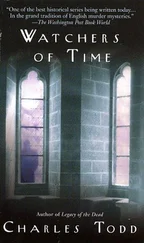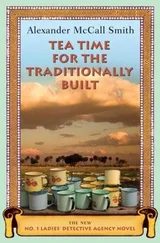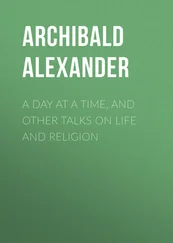Alexander Todd - A Time to Remember
Здесь есть возможность читать онлайн «Alexander Todd - A Time to Remember» весь текст электронной книги совершенно бесплатно (целиком полную версию без сокращений). В некоторых случаях можно слушать аудио, скачать через торрент в формате fb2 и присутствует краткое содержание. Город: Cambridge, Год выпуска: 1983, ISBN: 1983, Издательство: Cambridge University Press, Жанр: Химия, Биографии и Мемуары, на английском языке. Описание произведения, (предисловие) а так же отзывы посетителей доступны на портале библиотеки ЛибКат.
- Название:A Time to Remember
- Автор:
- Издательство:Cambridge University Press
- Жанр:
- Год:1983
- Город:Cambridge
- ISBN:0 521 25593 7
- Рейтинг книги:3 / 5. Голосов: 1
-
Избранное:Добавить в избранное
- Отзывы:
-
Ваша оценка:
- 60
- 1
- 2
- 3
- 4
- 5
A Time to Remember: краткое содержание, описание и аннотация
Предлагаем к чтению аннотацию, описание, краткое содержание или предисловие (зависит от того, что написал сам автор книги «A Time to Remember»). Если вы не нашли необходимую информацию о книге — напишите в комментариях, мы постараемся отыскать её.
A Time to Remember — читать онлайн бесплатно полную книгу (весь текст) целиком
Ниже представлен текст книги, разбитый по страницам. Система сохранения места последней прочитанной страницы, позволяет с удобством читать онлайн бесплатно книгу «A Time to Remember», без необходимости каждый раз заново искать на чём Вы остановились. Поставьте закладку, и сможете в любой момент перейти на страницу, на которой закончили чтение.
Интервал:
Закладка:
In general the universities were in a poor way. They were swamped by elementary teaching and frequently at loggerheads with the state governments on which they depended for support. Research was at a rather low ebb; most of the best people they produced went abroad to study for a doctorate, and usually did not return. The situation, at least in chemistry, was not helped by the low level of industrial activity, with a consequential paucity of openings for graduates outside the institutes of the Commonwealth Scientific and Industrial Research Organisation, which were doing an excellent and very necessary job in supporting agriculture and livestock production on which the country's welfare mainly depended. Shortly before my visit, it had been decided, on the advice of some leading expatriate Australian scientists, spurred on by Sir David Rivett, the head of CSIRO, to create an Australian National University at Canberra - a decision which, not surprisingly, was greeted with no great enthusiasm by the existing state universities. I recall being at a dinner in Melbourne given, if I remember aright, by the board of I.C.I. (ANZ) Ltd at which Rivett and I were guests. He expounded his views on the national university scheme indicating that it was to be essentially a research university, where all the best Australians would be able to develop work which would achieve international recognition. I asked whether it might not be wiser at this stage to do something that would put the state universities in order and enable them to develop into world-class institutions, rather than embark on the national university scheme. With this view he disagreed vehemently, saying that the state universities were quite hopeless and could never develop in the way I suggested. In reply I said that, if the state universities were neglected, reliance on a national university would be no solution, and that, if the state universities were not properly supported and encouraged, the long-term outlook for science in Australia would be bleak indeed; to my mind, one should build up the state universities and create a national postgraduate university later on. We had quite a set-to that evening. In the event, of course, I was proved right in one respect by the development which has since occurred in the state universities, which are now flourishing both in teaching and research. On the other hand, as Rivett hoped, the national university - although I still think it was founded earlier than it should have been - has settled down and is now a fine institution.
A few days before I was due to leave Australia for home I received a telegram from my old friend and former Vice-Chancellor, Sir John Stopford, in his capacity as deputy chairman of the Nuffield Foundation. It informed me that I would find at home a formal invitation to become a Nuffield Trustee and finished with the words 'and don't dare to refuse'. So, on returning to England I became a Managing Trustee of the Nuffield Foundation. Thus began a long and intimate association with this great charitable foundation, which I have served successively as Managing Trustee, deputy chairman and chairman until the end of 1979, and since then as chairman of the Ordinary Trustees. The Nuffield Foundation was created by Lord Nuffield who, having made a large fortune in the motor industry, wanted to set up a trust which would apply his wealth to the advancement of health, and the prevention and relief of sickness, the advancement of social well-being by scientific research, the development of education, and the care and comfort of the aged poor. During the first twenty-five years of its existence the Foundation devoted most of its resources to the promotion of research by grants-in-aid to individuals or groups seeking to explore and develop new areas in science, medicine, or social studies. Through these, and through its large ventures in various fields, e.g. the development of radioastronomy at Jodrell Bank, the Nuffield Science Teaching Projects and its stimulation of some relatively neglected fields of science, I believe the Foundation made a contribution to science in the post-war years in this country and in the Commonwealth out of all proportion to the actual sums of money it provided. A detailed account of the Foundation and its work during its first twenty-five years of existence has been published in book form (Clark. A Biography of the Nuffield Foundation. Longmans, London, 1972), and I need not enlarge on it here. Suffice to say that I have enjoyed every minute of my association with the Foundation, and that I have learnt through it that to spend large sums of money wisely on education and research is far from being an easy task!
The year 1951 was an exciting one scientifically, because it was in the early summer of that year that we finally solved the problem of nucleic acid structure, and I announced it in a lecture given in Manhattan Centre, New York, on the occasion of the 75th Anniversary of the American Chemical Society in August. Attendance at that meeting was quite an experience, for I had never been at such a huge gathering before. We had a very pleasant trip from Southampton to New York on the Cunard liner Caronia in company with a number of chemical friends - Ewart (Tim) and Frances Jones (Oxford), Bill and Carol Dauben (Berkeley), John and Kathleen Lennard-Jones (Cambridge), and Vlado and Kamila Prelog (Zurich). We plunged into a veritable maelstrom of social and scientific activities, in the company of several thousand other participants. It is true that one did meet most of the world's leading chemists there, but actual encounters were fleeting, and I am afraid the whole thing convinced me that gigantic meetings of that nature were things to avoid wherever possible.
During the next few years I was kept pretty busy between my research in Cambridge, the work of the Advisory Council on Scientific Policy and overseas travel, for, probably as a result of our nucleotide work, I began to receive more and more demands to lecture abroad. So it was that I found myself in Lucknow in January 1953 speaking at the Indian Science Congress. This was my first visit to India, although, since India became independent, I had been under continuous pressure from my friend Sir Shanti Bhatnagar to come out and see the results of his efforts to develop the National Laboratories under the aegis of the Council for Scientific and Industrial Research (a government organisation rather like the Department of Scientific and Industrial Research in the U.K.). At Bhatnagar's request, following the Lucknow meeting I spent several weeks visiting in turn Allahabad, Benares, Calcutta, Madras, Poona, Bombay and Delhi. I would find it very hard to give any simple or straightforward description of my impression of India on that visit. India had so many relics of a glorious past, and yet it seemed that all the glory was indeed in the past, and that what remained was a vast heterogeneous country in which one saw poverty such as I had never even dreamed of, cheek by jowl with fantastic riches. It was a land of contrasts, and I think my principal reaction was one of uneasy fear in face of a situation which was, to say the least, potentially explosive, and perhaps would actually have been so, if the general population had been better nourished and so lost its dull apathy. And I must confess that this same uneasy fear is with me even today, despite (or perhaps because of) a number of subsequent visits. This feeling I found most marked when in central and northern India; the south I found much more attractive, and it seemed less poverty stricken although the extremes were still there. I recall one remarkable encounter with the wealthy side of India when I was visiting Madras.
As I indicated above, Shanti Bhatnagar was very busy creating the National Laboratories, and I was in Madras when the National Electrochemical Laboratory was about to be opened in a small and rather (to me at least) obscure place called Karaikudi down in the southern tip of the country. I confess that, when I heard of it, I wondered why on earth one would want to locate a laboratory in such a remote spot. I learned, however, that a wealthy local landowner (named Alegappa Chettiar) had offered to pay for the entire building if it were located in Karaikudi, and this offer had been accepted by the government. For the opening ceremony, which was to be performed by the Prime Minister, Alegappa Chettiar had a large swathe cut in the jungle near his home, and tidied it up so that large aeroplanes could land. So we all flew down from Madras in two specially chartered Air India Constellations, had lunch with Chettiar, then went through the opening ceremony and flew back to Madras. Lunch was served to somewhere between fifty and a hundred people, and, as far as I could see, most of the plates and goblets used were silver or gold. I was given to understand that everything was paid for by Chettiar; if so, it must have set him back quite a bit, although he seemed wholly unconcerned.
Читать дальшеИнтервал:
Закладка:
Похожие книги на «A Time to Remember»
Представляем Вашему вниманию похожие книги на «A Time to Remember» списком для выбора. Мы отобрали схожую по названию и смыслу литературу в надежде предоставить читателям больше вариантов отыскать новые, интересные, ещё непрочитанные произведения.
Обсуждение, отзывы о книге «A Time to Remember» и просто собственные мнения читателей. Оставьте ваши комментарии, напишите, что Вы думаете о произведении, его смысле или главных героях. Укажите что конкретно понравилось, а что нет, и почему Вы так считаете.










